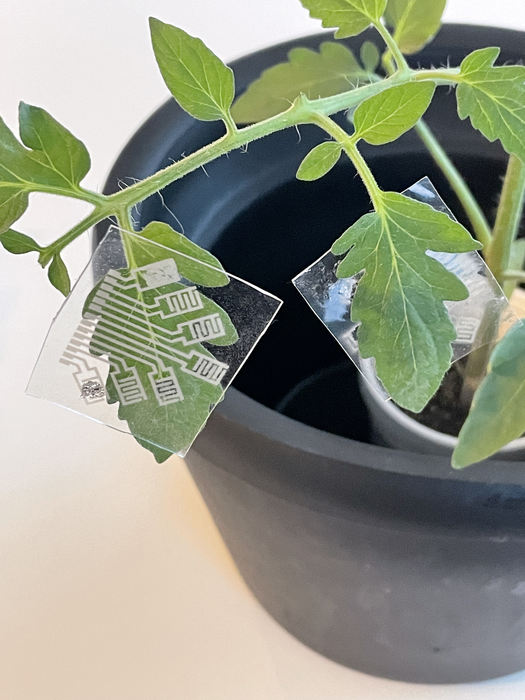
Scientists at North Carolina (NC) State University report that they have developed an electronic patch that can be applied to the leaves of plants to monitor crops for different pathogens—such as viral and fungal infections—and stresses such as drought or salinity. In testing, the researchers found the patch was able to detect a viral infection in tomatoes more than a week before growers would be able to detect any visible symptoms of disease.
“This is important because the earlier growers can identify plant diseases or fungal infections, the better able they will be to limit the spread of the disease and preserve their crop,” said Qingshan Wei, PhD, an assistant professor of chemical and biomolecular engineering at NC State and a corresponding author of a paper “Abaxial leaf surface-mounted multimodal wearable sensor for continuous plant physiology monitoring” in Science Advances. “In addition, the more quickly growers can identify abiotic stresses, such as irrigation water contaminated by saltwater intrusion, the better able they will be to address relevant challenges and improve crop yield.”
Huge potential for smart agriculture
“Wearable plant sensors hold tremendous potential for smart agriculture. We report a lower leaf surface-attached multimodal wearable sensor for continuous monitoring of plant physiology by tracking both biochemical and biophysical signals of the plant and its microenvironment. Sensors for detecting volatile organic compounds (VOCs), temperature, and humidity are integrated into a single platform,” write the investigators.
“The abaxial leaf attachment position is selected on the basis of the stomata density to improve the sensor signal strength. This versatile platform enables various stress monitoring applications, ranging from tracking plant water loss to early detection of plant pathogens. A machine learning model was also developed to analyze multichannel sensor data for quantitative detection of tomato spotted wilt virus as early as four days after inoculation. The model also evaluates different sensor combinations for early disease detection and predicts that minimally three sensors are required including the VOC sensors.”
The technology builds on a previous prototype patch, which detected plant disease by monitoring VOCs emitted by plants. Plants emit different combinations of VOCs under different circumstances. By targeting VOCs that are relevant to specific diseases or plant stress, the sensors can alert users to specific problems.
“The new patches incorporate additional sensors, allowing them to monitor temperature, environmental humidity, and the amount of moisture being ‘exhaled’ by the plants via their leaves,” says Yong Zhu, PhD, co-corresponding author of the paper and Andrew A. Adams Distinguished Professor of Mechanical and Aerospace Engineering at NC State.
Patches are small
The patches themselves are small–only 30 millimeters long–and consist of a flexible material containing sensors and silver nanowire-based electrodes. The patches are placed on the underside of leaves, which have a higher density of stomata (the pores that allow the plant to “breathe” by exchanging gases with the environment).
The researchers tested the new patches on tomato plants in greenhouses and experimented with patches that incorporated different combinations of sensors. The tomato plants were infected with three different pathogens: tomato spotted wilt virus (TSWV); early blight, which is a fungal infection; and late blight, which is a type of pathogen called an oomycete. The plants were also exposed to a variety of abiotic stresses, such as overwatering, drought conditions, lack of light, and high salt concentrations in the water.
The researchers took data from these experiments and plugged them into an artificial intelligence program to determine which combinations of sensors worked most effectively to identify both disease and abiotic stress.

The researchers say they are two steps away from having a patch that growers can use. First, they need to make the patches wireless, and they need to test the patches in the field, outside of greenhouses, to ensure the patches will work under real-world conditions.
“We’re currently looking for industry and agriculture partners to help us move forward with developing and testing this technology,” Zhu says. “This could be a significant advance to help growers prevent small problems from becoming big ones and help us address food security challenges in a meaningful way.”

